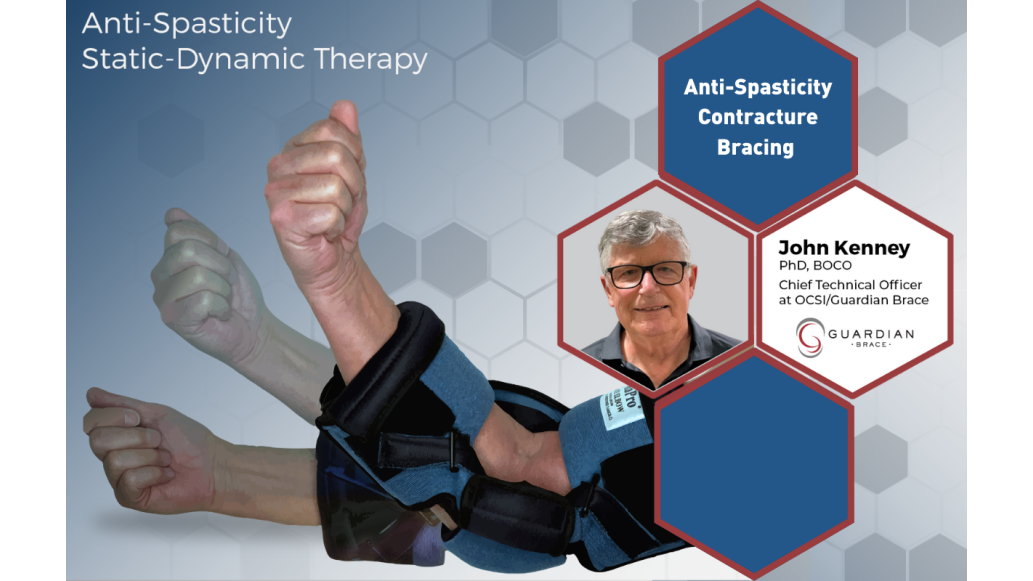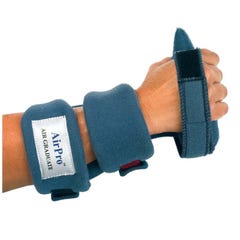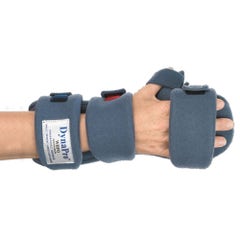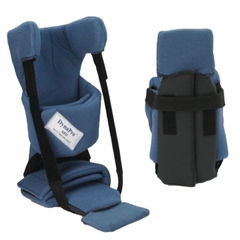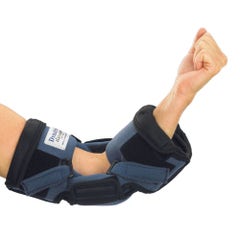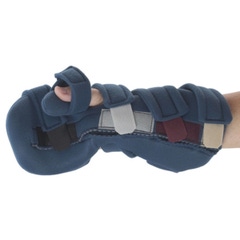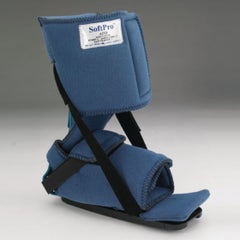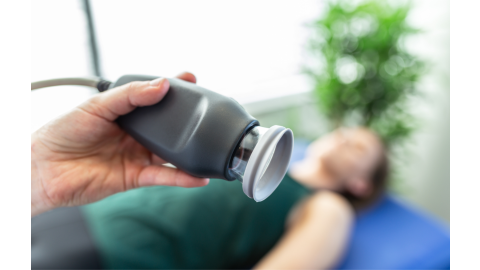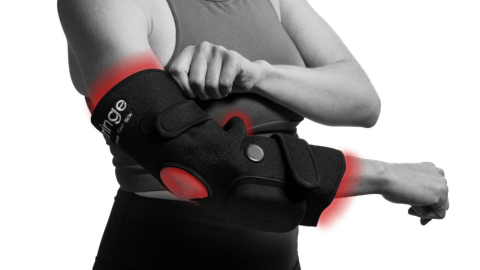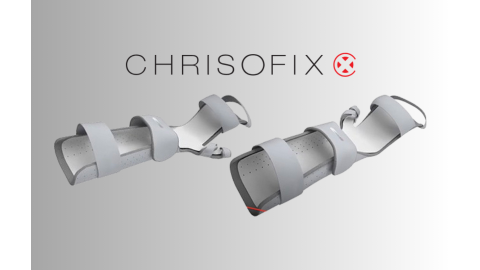Assisting patients with spasticity, a condition characterized by increased muscle tone and stiffness, often accompanied by muscle spasms and involuntary movements, can be challenging. It has been a challenge among specialists to find a brace that adequately addresses the challenges patients with spasticity face.
John Kenney, PhD, BOCO, invented the DynaPro Anti-Spasticity Orthotics and holds five patents on anti-spasticity brace design. In an article he wrote, Anti-Spasticity Contracture Bracing, Kenney shows how traditional static ball hand splints fall short of the needs patients with spasticity have, and how technological advancements have allowed the shift toward dynamic bracing. This article will summarize that study.
Terms to Know
Muscles are controlled by two primary motor nerves called the Muscle Spindle and the Golgi Tendon Organ (GTO). They work together to help your muscles move smoothly and efficiently.
- The Muscle Spindle is inside the muscle and detects the muscle lengthening or shortening. It is responsible for muscle contraction and is referred to as the excitatory motor nerve.
- The GTO is found at the tendon muscle junction on the distal and proximal ends of muscles. It senses muscle tension and is responsible for muscle inhibition.
These two parts work together. For example, if you hold a 5-pound weight in your hand, the GTO senses the tension load on the arm and controls the Muscle Spindle so it only contracts the amount needed to efficiently hold the weight.
Highlights
There are three types of orthotic design that can be successfully used as anti-spasticity orthotics:
- Pneumatic air bladder braces
- Static-dynamic anti-spasticity braces
- Constant linear tension spring loaded braces
Anti-spasticity bracing should offer a sustained gentle tension to initiate stress-relax into the spastic muscle within several minutes. The clinician confirms stress-relax by testing the muscle immediately post stretch (the muscle belly is taut) and after 5 minutes of brace application to confirm “relax” (the muscle belly softens). If the muscle has not softened the tension should be slightly reduced until stress-relax is achieved.
Anti-spasticity braces should lead to the intensity and duration of involuntary muscle contractions diminishing over time.
Key Characteristics of Effective Anti-Spasticity Orthotics
According to Kenney, Anti-Spasticity orthotics should have the following characteristics to be effective:
- The brace must “give” during a significant involuntary muscle contraction.
- The brace allows muscle to shorten during involuntary contractions, whether they be limb (over stretching) or non-limb related (sit/standing, coughing).
- Reduces Muscle Spindle hyperexcitability.
- Examples of braces that give: Pneumatic Air orthotics, Static Dynamic orthotics, Constant Linear Tension braces.
- The brace when applied should initiate gentle tension to both excite the GTOs (inhibitory excitement) and increase paired GTO/Muscle Spindle communication.
- The brace must have a negative non-linear spring force or a constant linear spring force tension when applied to avoid “feeding into tone."
Static splints are generally ineffective for managing spasticity, as they prevent muscle shortening during involuntary contractions and fail to provide sustained inhibitory tension. Instead, anti-spasticity orthotics should apply gentle, sustained tension to activate the GTOs, which help reduce spastic muscle activity.
Types of Anti-Spasticity Braces
Pneumatic Air Bladder Orthotics
These braces use inflatable air bladders to deliver gentle, sustained tension to spastic muscles. The air bladders compress easily during involuntary contractions, allowing the muscle to shorten naturally and reducing excitability. When properly inflated, they provide an effective inhibitory stretch and promote muscle relaxation within minutes. They work well for patients with all levels of spasticity.
Static Dynamic Orthotics
Designed with a static structure but with flexible inserts, these patented braces are commonly used for elbow and knee contractures and fit 15 degrees straighter than the contracted limb. They apply continuous, inhibitory tension while still allowing the muscles to shorten during spastic episodes, helping reduce Muscle Spindle excitability without feeding into tone.
Wrist-Hand-Finger Orthoses (WHFOs)
These orthoses are heat-molded to hold the fingers in full extension and the wrist at an extended 30-degree angle beyond end-range comfort. The flexible structure applies sustained inhibitory pressure while accommodating muscle shortening, making them ideal for managing upper limb spasticity.
Ankle-Foot Orthoses (AFOs)
Fitted with flexible calf extensions and dorsi-assist straps, these braces deliver sustained stretch to spastic ankle and foot muscles. The dynamic tension helps inhibit spasticity while allowing natural shortening during contractions, providing both therapeutic effect and comfort.
Torticollis Collars
Used for managing lateral neck spasticity, these collars apply gentle, sustained tension to the contracted side of the neck. Over time, this targeted stretch helps relax the affected muscles and supports rebalancing of the abnormal reflex arc.


DynaPro Orthotics
These second-generation static dynamic braces are engineered using a myotonometer that tests muscle tension to determine the optimal tension level for muscle inhibition within 5 minutes. With a patented negative nonlinear spring force, DynaPro braces provide effective, individualized inhibitory therapy within just 5 minutes of application.
Constant Linear Spring-Loaded Braces
Unlike positive spring-loaded types, these braces maintain a constant, moderate tension that supports GTO activation without overexciting Muscle Spindles. Brands such as UltraFlex, EMPI, and DeRoyal DeROM offer versions that can be adjusted to deliver sustained stretch while allowing muscle relaxation and shortening during spasms.
Kenney states the following braces are contraindicated for patients with spasticity:
Static Splints
While traditionally used, static splints hold the limb in a fixed position and do not permit muscle shortening during spasms. They offer no sustained inhibitory input and may worsen spasticity by “feeding into tone,” especially in cases beyond mild or flaccid presentations.
Positive Linear Spring-Loaded Braces
These braces increase force as the muscle resists, which can overstimulate hyperactive Muscle Spindles during spasms. This design often aggravates spasticity rather than inhibiting it, making them contraindicated for patients with upper motor neuron-related tone abnormalities.
Types of Anti-Spasticity Braces
The muscle stress-relax phenomenon refers to the natural response of a muscle to gentle, sustained tension, where it gradually relaxes and elongates within minutes. This is a critical component of effective anti-spasticity orthotic therapy. Confirmation involves palpating the muscle immediately after applying the brace (to ensure tension) and again after 3–5 minutes (to confirm relaxation). A proper stress-relax response offers the following clinical benefits:
- Improved comfort and compliance – While the initial stretch may feel slightly uncomfortable, the muscle relaxes within minutes, reducing the sensation of stretch and making the brace more tolerable for long-term wear.
- Reduced risk of skin breakdown – As the muscle relaxes into the brace, pressure on the skin is minimized, lowering the risk of pressure-related injuries.
- Optimal therapeutic effect – The brace delivers the appropriate level of sustained tension needed for abnormal reflex arc therapy and helps counteract contracture-related tissue shortening.
- Effective spasm management – The brace accommodates dynamic contractions by allowing muscles to shorten while preventing sustained static contractions through GTO-mediated inhibition, supporting long-term spasticity control.
John Kenney’s research and innovations in anti-spasticity orthotic design highlight a critical shift from static splinting to dynamic, responsive bracing that aligns with the neurophysiology of spasticity. By allowing controlled muscle shortening and applying sustained inhibitory tension, modern braces such as DynaPro, pneumatic air bladder systems, and static dynamic designs effectively reduce muscle hyperactivity and support long-term motor control.
The incorporation of the stress-relax phenomenon further ensures therapeutic success by enhancing comfort, compliance, and neuromuscular inhibition. Kenney’s work offers a clinically grounded framework for improving outcomes in patients with upper motor neuron-related spasticity.
Read the full article by John Kenney.
John Kenney, PhD, BOCO is the inventor of DynaPro Anti-Spasticity Orthotics and holds five patents on anti-spasticity brace design. He is the V.P. of Clinical Development at Ongoing Care Solutions, Inc. / Guardian Brace.
Medical Disclaimer: The information provided on this site, including text, graphics, images, and other material are for informational purposes only and are not intended to substitute for professional medical advice, diagnosis, or treatment. Always seek the advice of your physician or other healthcare professional with any questions or concerns you may have regarding your condition.

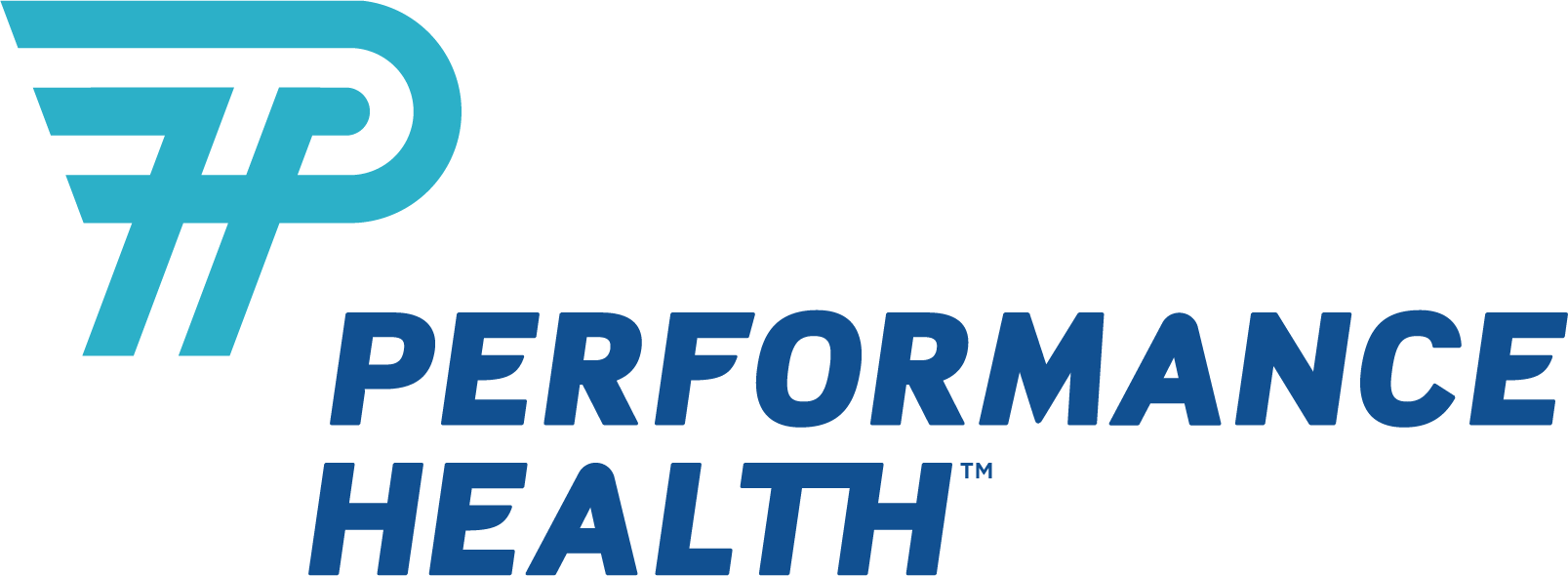






 France
France Australia
Australia